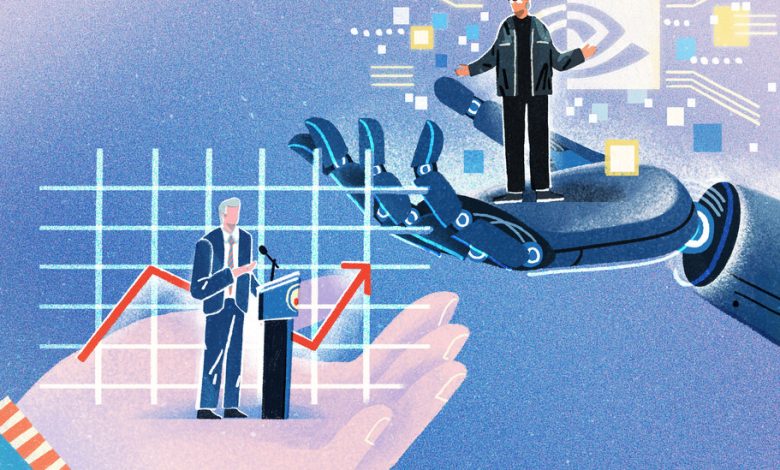In the Markets, a Tug of War Between Big Tech and the Fed

It isn’t much of a stretch to claim that the fate of the U.S. economy and stock market this year — and, maybe, even the November elections — will be determined by the forces arrayed at two consequential meetings held 3,000 miles apart.
One was a sales conference on artificial intelligence that filled a San Jose, Calif., hockey arena to the brim, the other a conclave on interest rates, inflation and unemployment at the Federal Reserve’s white marble neoclassical headquarters in Washington.
The moods conveyed by the events this past week couldn’t have been more different: rampant optimism in Silicon Valley versus measured restraint at the central bank, which held short-term interest rates high to avoid setting off another wave of fierce inflation.
On Wall Street, which is closely monitoring both the tech economy and the Fed, excitement over the possibilities of A.I. riches outweighs concerns about interest rates and inflation. The stock market has already soared since the autumn of 2022 and shows every sign of powering higher.
But whether the current bull market has any chance of being sustained will depend in large part on the Fed’s ability to dampen inflation without harming the core of the economy. And excessive exuberance in financial markets could further delay Fed rate cuts, which were expected to begin by now, but are now deemed unlikely to start until at least June. The Fed doesn’t explicitly target asset prices, but it could be forced to hold rates high if it appears that a dangerous bubble is forming.
Yet continued Fed inaction would protract the pain of consumers who have been financing purchases at punishingly high interest rates. Those rates are making the cost of housing and credit and auto loan debt painfully expensive. Quite likely, the debt burden is contributing to dissatisfaction among voters, who give the Biden administration poor marks for the economy. What’s more, if consumers run out of steam, the Fed’s campaign to steer the economy safely toward a low-inflation future could run into serious trouble.
